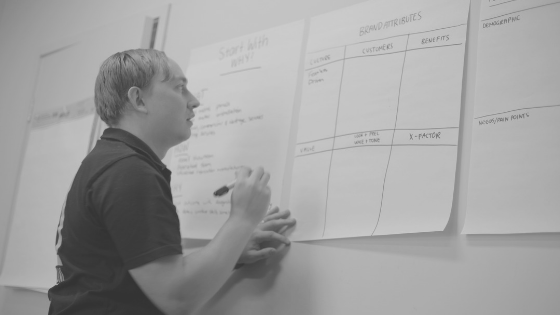
Making Your Business The Best Version It Can Be
A lot of businesses have a great level of success, whether it be after five years or 20 years. The unfortunate problem that’s seen however is the owner or owners are tied to the day to day operations of the business. Sure, they can go on a two week holiday or have Fridays off, but now a lot of people are starting to look further ahead. Whether it be to winding back, semi retiring, or even selling the business, you need to have plans in place.
Regardless of what your long term lifestyle goals look like, it's fair to say that a successful business should be able to be sold at anytime without a fuss. The main characteristics that would allow this could be:
- The business runs without the owners, or could continue to run for 12 months without the owners.
- The business proactively uses standard operating procedures as an accountability and redundancy mechanism for owners.
- The business has a predictable lead generation method with multiple marketing channels providing regular new business.
- The company has a thriving culture with a clear vision that all staff can recite at any moment.
- The company is profitable without the owners personal input.
There are a number of simple exercises you can do, ensuring your personal input isn't required in your business day to day in the future. So let’s take a look.
Define Your Company Vision, Values & Why
Your staff need to be driven by a higher purpose, every day. Start to think about why you got into business in the first place, or what your products and services bring for your clients. A great example would be an outdoor kitchen company.
They could simply have their services on their vans or website, instead they could state that 'We believe that every Australian family deserves to have a fantastic outdoor dining experience'. Your staff will buy into this reasoning for your business, as well as your customers which leads to higher levels of motivation.
Create Current & Accessible SOPs (Standard Operating Procedures)
Using an online portal such as Google Sites or SystemHub, you can empower your staff to create standard operating procedures. These should be reviewed monthly or quarterly depending on your business.
It is vital to have these in place so staff are accountable and your customers receive a consistent experience and efficiency is at its peak. This will also make growth easier as new staff join the business and they have an 'instruction manual' to use when learning how the business operates.
To get started you can define your products and services and create bullet point 'tasks' for each stage of the process for delivering the product or service. This can then expand to HR, Payroll, Operations and more.
Create An Organisational Chart
An organisational chart is a fantastic, yet simple exercise that can be performed with a white board in your office. The outcome of this exercise is a clear picture of where everyone's time is going within your organisation.
To get started, we recommend using a large whiteboard. Start to draw squares representing the ideal version of your business roles such as Managing Director, CEO, Management, HR, Production, Support and so on.
Once you have created a chart with all of the roles in your ideal business, start to draw initials in all of the roles based on who does what now. You will find that your initials are in a lot of boxes typically. Now that you have a picture of who is doing what, start to strategically think about where your personal touch isn't required and where other team members can assist.
The aim is to be more resourceful, not to pay for more resources unless you really need to. Eventually by visiting the org chart regularly, you can make yourself redundant from all roles except for Managing Director or equivalent then step away completely to watch the self sufficient, well oiled machine you have created.
Don't stop now. Keep learning
 7 ways to improve your CRM quality and reliability
Why your CRM needs a little tender love and care So, it’s been a while since your CRM...
7 ways to improve your CRM quality and reliability
Why your CRM needs a little tender love and care So, it’s been a while since your CRM...
 5 tips for using AI and automation to elevate your e-commerce store
Keeping up with orders, returns, customer service and inventory can get out of hand pretty quickly...
5 tips for using AI and automation to elevate your e-commerce store
Keeping up with orders, returns, customer service and inventory can get out of hand pretty quickly...
 Combine AI and Revenue Operations to dominate your growth strategy
Looking for better results? Implement AI and RevOps to power your growth strategy and create new...
Combine AI and Revenue Operations to dominate your growth strategy
Looking for better results? Implement AI and RevOps to power your growth strategy and create new...

